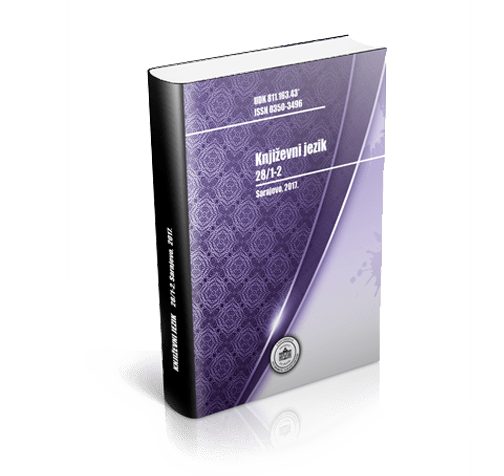Croatian accentual norm at the beginning of the 21st century (from theory to practice and back)
Croatian accentual norm at the beginning of the 21st century (from theory to practice and back)
Author(s): Blaženka MartinovićSubject(s): Theoretical Linguistics, Phonetics / Phonology, Lexis, Sociolinguistics, South Slavic Languages, Philology, Theory of Literature
Published by: Institut za jezik
Keywords: codified norm; usus; accent; e-lektira (audio versions of school reading list books available online);
Summary/Abstract: Croatian accentual norm is in a constant state of flux. Its stability is impeded, first of all, by two mutually intertwined forces: the nature of the accentual norm, which belongs to speech (dynamic dimension, individual realization), and the disagreement amongst linguists as to what to record and prescribe (in constant interaction between the stress accent and pitch accent systems). The modern accentual norm is obtained from non-orthoepical manuals, i.e. grammar books, dictionaries, handbooks (which further complicates the clarification of the orthoepical reality). We will conduct a comparative analysis of the approach, in modern handbooks, to accent alternations in morphology, falling accent in non-initial syllables in word formation, post-tonic length, uncertainties regarding lexical stress, etc. Grammar books and dictionaries approach the open questions in different ways and this paper gives an overview of the (systematic and non-systematic) solutions offered by linguists today, with the aim of presenting the dynamics of the codified norm (which carries the label of being “conservative” and “hidebound”). The changes in the modern norm are compared then to usus occurrences, illustrated by a narrower speech corpus – the speech of actors. In their orthoepical research, linguists resort to the speech of radio and television presenters, linguists in specialised radio and television programs, students of the Croatian language or phonetics, Croatian language teachers, etc., and, more recently, to the speech of actors reading audio books (MP3 files are available at www. lektire.skole.hr). Presenters, teachers and actors have always been perceived as quintessential competent speakers of the standard language, so close observation of their speech as one of the steps in the process of describing and prescribing is the basis of every orthoepical research. Since the modern speech/pronunciation (e-lektira, audio versions of school reading list books available online) has still not been analysed and valorised linguistically/orthoepically, and since it is available to those learning and listening to speech values in this type of material, the paper turns to the corpus with the intention of determining the basic features of pronunciation. Prose texts whose pronunciation has been analysed are those written in or translated into the standard language. Special attention has been given to accent (stress placement and stress shift) and to the prosodic word. Specific pronunciation traits (especially those related to the accentual norm) have been compared to those prescribed in handbooks. Finally, the accentual traits acknowledged by the modern conception of accentual norm and codification were clarified as well as those that are systematically ignored in modern prescription.
Journal: Književni jezik
- Issue Year: 2020
- Issue No: 31
- Page Range: 115-149
- Page Count: 35
- Language: English

